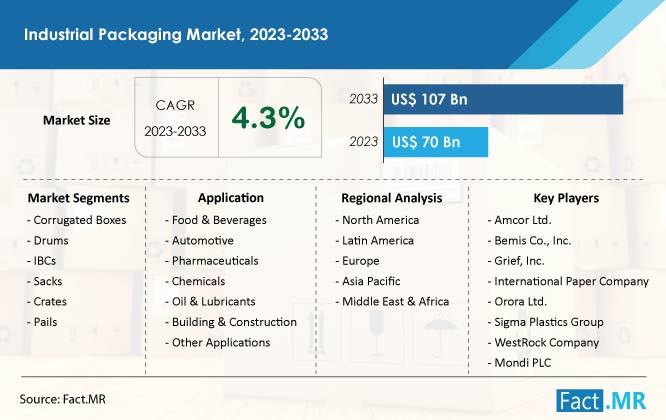Processing Company Expertise: Unlocking Effectiveness in Production
Wiki Article
Reliable Industrial Recycling Solutions for Sustainable Packaging: A Comprehensive Guide
In today's progressively environmentally-conscious globe, the demand for lasting product packaging solutions has actually never ever been greater. To satisfy this need, services across markets are proactively looking for reliable industrial recycling services. Browsing the complicated landscape of sustainable product packaging can be testing without a detailed guide. That's where this thorough guide on reliable industrial recycling services for lasting product packaging is available in. By checking out essential areas such as product packaging material selection, designing for recyclability, carrying out reusing framework, collaborating with recycling companions, and monitoring and measuring recycling success, this overview will certainly furnish you with the knowledge and tools required to make enlightened decisions and drive favorable adjustment within your company. Whether you're a packaging expert, sustainability supervisor, or simply interested in the topic, this overview will provide important understandings and strategies to aid you browse the world of lasting product packaging.Packaging Product Choice
The choice of packaging materials plays an important role in ensuring the sustainability of commercial recycling remedies. The choice of materials is essential in reducing environmental impact and maximizing reusing efficiency when it comes to sustainable packaging. Picking the right products can help in reducing waste generation, save sources, and advertise a round economic climate.One vital aspect to take into consideration in packaging product option is recyclability - industrial packaging solutions. Products that can be quickly recycled and incorporated back into the manufacturing cycle are chosen. Materials like cardboard, paper, glass, and certain types of plastics can be recycled multiple times without losing their quality. On the other hand, products that are tough to recycle, such as non-recyclable compounds or combined plastics, can produce challenges for the recycling process and may wind up in burners or land fills.
One more factor to consider is making use of biodegradable and eco-friendly materials. Packaging made from eco-friendly resources, such as plant-based plastics or biopolymers, can help in reducing dependence on nonrenewable fuel sources and minimize environment adjustment. In addition, eco-friendly products break down normally with time, lowering the build-up of waste in land fills.
Additionally, the weight and volume of packaging products need to be minimized to lower transportation expenses and energy consumption. Light-weight products not just require fewer resources during production but additionally add to lower carbon exhausts throughout transport.
Creating for Recyclability
Product packaging developers ought to prioritize the usage of products that are widely accepted for recycling and have developed reusing infrastructures. Products such as glass, light weight aluminum, and certain kinds of plastic, like Family pet and HDPE, are commonly recycled and need to be favored over products that are costly or tough to recycle.One more important factor to consider in creating for recyclability is the removal of unnecessary parts or materials. By minimizing the number of layers, finishings, and additional elements, product packaging can be made less complex and less complicated to recycle. In addition, developers need to aim to minimize the usage of mixed materials, as they can make complex the reusing process.

Implementing Recycling Facilities
Reliable execution of recycling framework is vital for the success of commercial reusing remedies. Without correct framework in place, the reusing procedure ends up being inefficient and ineffective, impeding the total goal of sustainable packaging.To implement recycling infrastructure successfully, several key elements need to be thought about. To start with, there ought to be a well-organized collection system that assists in the separation and collection of recyclable materials. This can consist of designated reusing containers in public areas, in addition to partnerships with waste management companies for curbside pickup and sorting.
Once gathered, the recyclable products require to be carried to recycling facilities in a timely manner. This calls for reliable logistics and transport networks, ensuring that the products get to the appropriate centers immediately.
At the reusing centers, progressed sorting and processing technologies need to be in place to separate different types of products successfully. This consists of using automated arranging equipments, optical scanners, and hand-operated sorting techniques.
Additionally, there must be a durable market need for recycled products. This can be attained via collaborations with manufacturers and markets that make use of recycled products in their manufacturing procedures. Developing a stable market for recycled products incentivizes the reusing sector and promotes the round economy.
Teaming Up With Recycling Allies

One secret facet of teaming up with reusing companions is the facility of clear interaction channels. It is essential to develop open lines of interaction to assist in the exchange of information, updates, and feedback. This allows both events to remain notified about the development of reusing campaigns and address any difficulties or concerns that might emerge.
In addition, collaboration can include joint efforts in executing and making recycling programs. Reusing partners can supply useful insights and guidance in establishing reliable collection systems and identifying one of the most appropriate recycling modern technologies. By functioning together, services and reusing partners can maximize the recycling procedure and minimize waste.
In addition, cooperation can expand beyond the operational aspects of reusing. It can additionally include advocacy and company website education initiatives. By joining pressures, services and recycling companions can increase awareness about the relevance of recycling and advertise the adoption of lasting product packaging practices amongst customers and various other stakeholders.
Tracking and Measuring Recycling Success
To make sure the performance of industrial reusing services and the accomplishment of lasting packaging goals, it is important for organizations and their reusing companions to establish a detailed system for tracking and gauging recycling success (plastic container manufacturer). Tracking and determining recycling success permits services to assess the influence of their recycling efforts, recognize areas for improvement, and established purposeful targets for future progressionOne way to track reusing success is through using data collection and analysis devices. By gathering information on the quantity of packaging waste produced, the percentage of waste that is recycled, and the kinds of materials being reused, companies can obtain important insights into their recycling efficiency. This data can after that be analyzed to identify fads, patterns, and locations of inadequacy.
One more vital facet of monitoring and gauging recycling success is establishing clear and standard metrics. This enables companies to contrast their performance against market benchmarks and track their development gradually. Metrics such as reusing rates, waste diversion prices, and greenhouse gas exhausts can supply a quantitative measure of a service's reusing success.

Verdict
Finally, executing effective industrial recycling options for lasting product packaging requires cautious factor to consider of packaging material option, making for recyclability, carrying out reusing facilities, teaming up with recycling companions, and monitoring and gauging reusing success. By integrating these methods, companies can add to a more sustainable and environmentally-friendly strategy to packaging, reducing waste and promoting the round economic climate.By discovering key locations such as packaging product selection, developing for recyclability, implementing reusing facilities, working together with recycling partners, and monitoring and gauging recycling success, this overview will certainly equip you with the expertise and tools required to make informed choices and drive favorable change within your company. Packaging developers ought to visit this website focus on the use of products that check here are widely accepted for recycling and have established reusing infrastructures.Partnership with recycling partners is essential for the effective implementation of commercial reusing options and the achievement of lasting product packaging goals. By joining pressures, companies and recycling companions can increase recognition regarding the importance of reusing and advertise the adoption of sustainable packaging practices among customers and various other stakeholders.
By collecting information on the quantity of packaging waste produced, the percent of waste that is recycled, and the kinds of products being recycled, organizations can acquire useful insights right into their reusing efficiency.
Report this wiki page